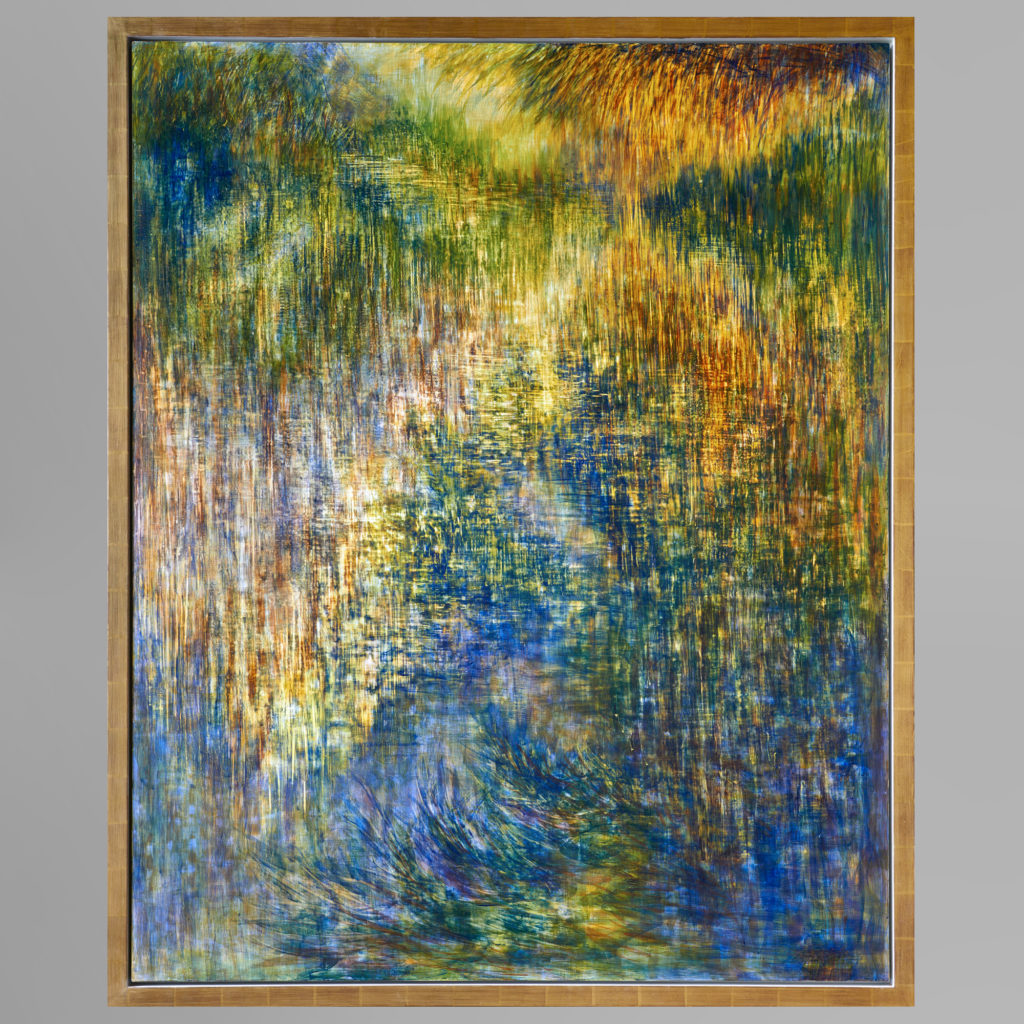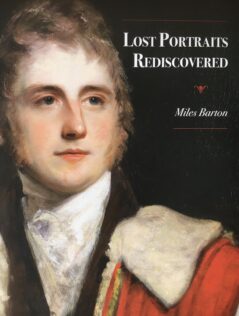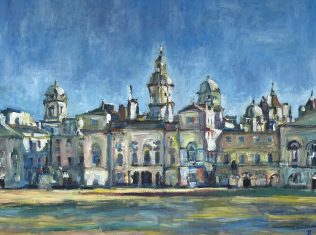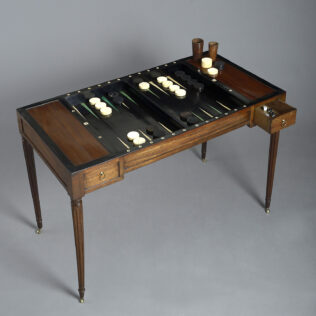Pictures, Special Reports
Rupert Muldoon Shadowed Waters Exhibition Catalogue Essay by Sophie Barling
‘I should paint my own places best,’ wrote John Constable; ‘painting is but another word for feeling.’ Based six miles downstream from Salisbury – one of Constable’s ‘places’ – Rupert Muldoon has followed the same line of thought, haunting stretches of the Avon near his home and studio at Trafalgar Park. The name ‘Avon’ is derived from the ancient British word for river – which makes the River Avon a charming tautology. The emphatic, essential riverness of its name makes it all the more fitting a subject for Muldoon’s work: impressionistic and abstract paintings of the water, ‘landscapes’ in portrait format that ‘capture a slice through what you see’, as the artist puts it. These vertical slices pull the viewer headlong into the painting: one almost expects a splash.
Muldoon’s method, too, reflects Constable’s sentiment about painting as feeling: he paints mostly from memory, letting the colours, light and shapes imprinted in his mind’s eye after a walk to the river re-emerge distorted, condensed and abstracted on canvas. Or, to be more precise, on board; for Muldoon’s medium is egg tempera, an ancient, natural preparation somehow appropriate for his ancient, natural subject matter. While the crisp white of the gesso-covered wooden panel provides a luminous base, the aqueous paint itself – a mix of egg yolk and water with pure pigment – produces an intensity of colour as well as ‘its own splashes and drips’, Muldoon explains. Tempera dries quickly, encouraging rapid work; like handling running water, and leaving this effect. He scores the paint while it’s still wet to achieve the flecks of light, the ripples and rivulets of moving water with its liquid look of molten metal. Here are fire and water; Muldoon favours ‘the fleeting moment of minimal light at either end of the day’, and perhaps for this reason some of his paintings – Moving Water I and Winter River III for instance – seem to inherit a colour palette from Turner’s fiery sunsets over sea, lake and river (or the more literal blaze over the Thames in Burning of the Houses of Parliament). One remembers Monet too, returning again and again to the water lilies at the bottom of the garden he created at Giverny in Normandy – near-abstract ‘slices’ of the same body of water painted in different weather conditions, hours, moods. (Muldoon is also a landscape architect and gardener, and brings this to bear in his work.)
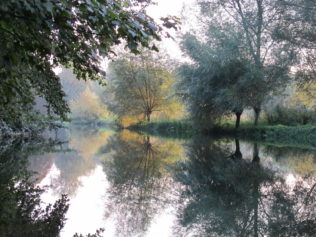
But Muldoon’s self-proclaimed gods are Gustav Klimt – who also painted landscapes in portrait format – Peter Doig and Gerhard Richter, whose abstract paintings, with their blurred and scraped vertical lines and cumulative layers, are an obvious source of inspiration. ‘With Richter it becomes a process and the painting is born of how he actually makes it,’ says Muldoon, ‘and I think that’s been a great influence… it is a process-driven creation.’ Though there are recognisably representational elements in Muldoon’s work, he will often turn the panel upside down or sideways to vary the direction of brush strokes, and to enhance the abstract elements of the composition.
While each separate application of tempera must be worked swiftly – which produces an immediate response to the watery scene recently observed – Muldoon will spend a month or more on one painting, reworking, adding layers, erasing… It’s what we do with memories; a scene recalled shifts in time, and according to our psychological state at the time of remembering. Muldoon clearly relishes this capricious aspect of his working process.
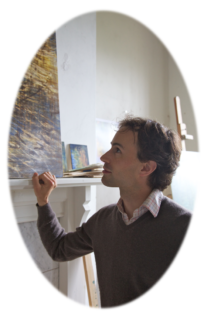
Water is a strong medium for the projection of psychological states, and Muldoon seems to be drawing on this particularly in Under the River, which looks down into the water from above, breaking the surface and revealing something of the depths. Like the real thing can be, it’s hypnotic, and slightly unsettling. In 2006 Richter named a group of his abstract paintings after the American composer John Cage, whose music he had been listening to while working. Cage’s 1948 piano piece In a Landscape would make a fitting musical accompaniment to Rupert Muldoon’s river works: meditative, light-flecked, shimmering; with darker things – shadows – creeping in at the edges.
Sophie Barling is a freelance writer on interiors, design, art and travel. Her work has been published in The World of Interiors, Country Life, Architectural Digest and Conde Nast Traveller, among other titles.
Shadowed Waters
An Exhibition of Paintings by Rupert Muldoon
14 – 20 November 2016
at Timothy Langston Fine Art & Antiques, 20A Pimlico Road London

